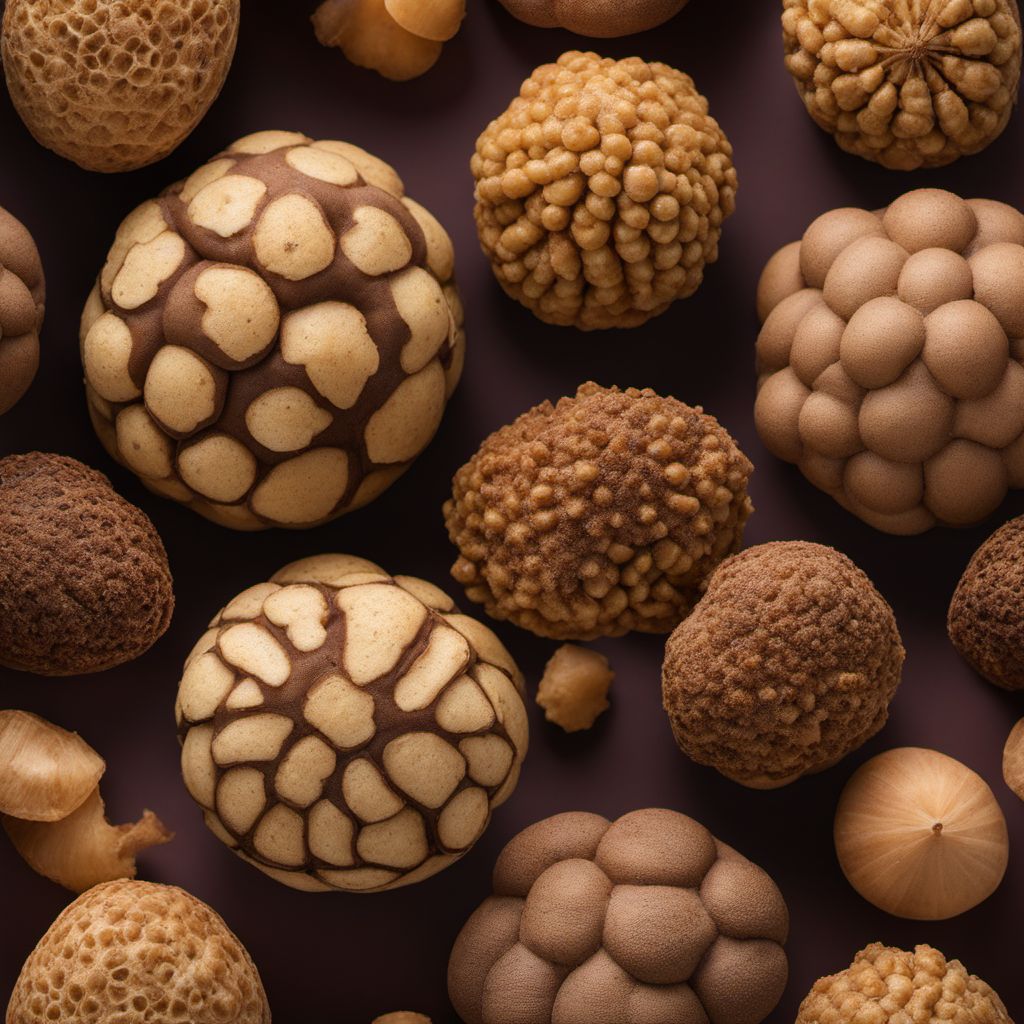
Ingredient
Other species of genus Tuber, not elsewhere mentioned
The Hidden Gems of the Earth
Other species of genus Tuber, not elsewhere mentioned, refer to various types of truffles, including black truffles, white truffles, and summer truffles. These fungi are highly prized for their distinct earthy, musky aroma and complex flavors. Truffles have a rough, knobby exterior and a firm, dense texture. Black truffles have a dark brown to black color, while white truffles are pale yellow or beige. Summer truffles are less aromatic and have a milder flavor compared to their counterparts. Truffles are often referred to as the diamonds of the culinary world due to their rarity and high value.
Origins and history
Truffles have a long history dating back to ancient civilizations such as the Egyptians, Greeks, and Romans, who considered them a delicacy. They were highly sought after for their unique aroma and flavor. Truffles are found in various regions around the world, including Europe, North America, and Asia. They grow underground in a symbiotic relationship with the roots of certain trees, such as oak, hazelnut, and beech. Truffle hunting, using trained dogs or pigs, is a traditional method of harvesting these elusive fungi.
Nutritional information
Truffles are low in calories and fat but rich in flavor. They contain a variety of essential minerals, including potassium, calcium, iron, and magnesium. Truffles are also a good source of dietary fiber. However, due to their high cost and intense flavor, they are typically used sparingly in dishes.
Allergens
Some individuals may be allergic to truffles, particularly those with mushroom allergies. It is recommended to exercise caution and consult with a healthcare professional if you have any concerns.
How to select
When selecting truffles, look for ones that are firm and free from any signs of decay or mold. They should have a strong, distinct aroma. Fresh truffles are often sold whole or in slices. Truffle products such as truffle oil or truffle salt should be purchased from reputable brands that use real truffle extract.
Storage recommendations
Fresh truffles should be stored in airtight containers or wrapped in paper towels to prevent moisture loss. They should be kept in the refrigerator at a temperature between 32°F and 39°F (0°C and 4°C). Truffle products such as truffle oil or truffle salt should be stored according to the manufacturer's instructions.
How to produce
Growing truffles requires specialized knowledge and conditions. It is not suitable for amateur production.
Preparation tips
Truffles are best enjoyed shaved or grated over dishes to maximize their flavor. They can be used to enhance the taste of various dishes, including pasta, risotto, eggs, and meat. Truffle oil or truffle salt can be used as a finishing touch to add a hint of truffle flavor to salads, soups, or roasted vegetables. Remember that a little goes a long way with truffles, as their flavor can easily overpower other ingredients.
Culinary uses
Truffles are highly regarded in gourmet cuisine and are often used in upscale restaurants. They are prized for their ability to elevate the flavors of dishes and add a touch of luxury. Truffles are commonly used in pasta dishes, sauces, and risottos. They are also a popular ingredient in charcuterie boards and can be enjoyed with cheese and cured meats.
Availability
Truffles are commonly found in regions such as France, Italy, Spain, and the United States. They are also cultivated in countries like Australia and New Zealand.

